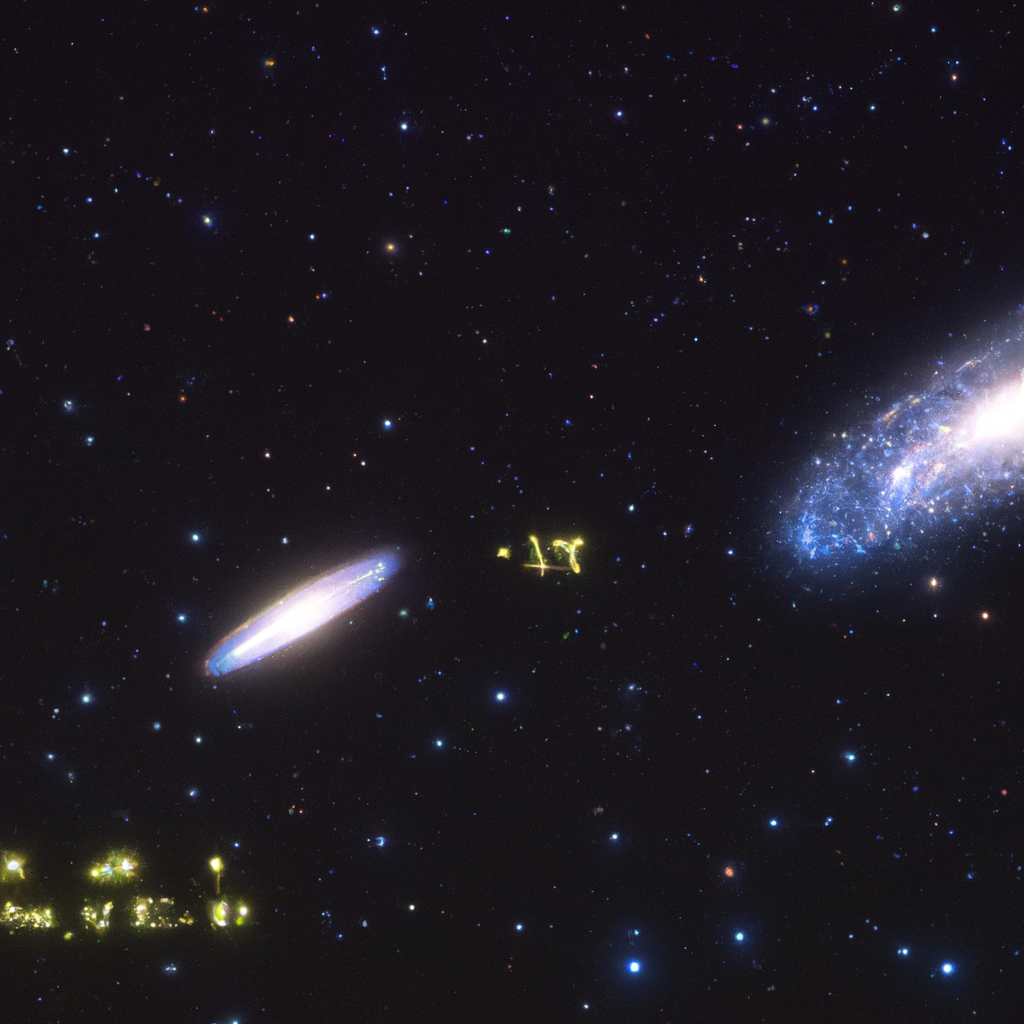Astronomy has always been a fascinating subject for humans. We have been observing the night sky for centuries to understand the secrets of the universe. One of the most intriguing questions in astronomy is how astronomers measure the distance of far away galaxies. In this article, we will discuss the techniques used by astronomers to determine the distance of galaxies from Earth.
Astronomers use a range of techniques to measure the distance of galaxies. Each method has its strengths and weaknesses, and astronomers use complementary techniques to cross-validate their results. The following are some of the most commonly used techniques:
1. Parallax
Parallax is a technique used to measure the distance of nearby stars. The principle behind this method is that stars appear to shift their positions slightly as the Earth orbits the Sun. Astronomers measure the angular shift of a star’s position over the course of a year and use this information to calculate the star’s distance from Earth.
However, this method is not useful for measuring the distance of galaxies because they are too far away. The shift in position is too small to be detected from Earth, and there are no nearby reference points to use for comparison.
2. Cepheid Variables
Cepheid variables are a type of star that pulsates in a regular pattern. The period of the pulsation is related to the star’s intrinsic brightness. Astronomers can measure the period of the pulsation and use it to calculate the star’s distance from Earth.
Cepheid variables are useful for measuring the distance of nearby galaxies. However, they are not useful for measuring the distance of more distant galaxies because they are not bright enough to be detected.
3. Supernovae
Supernovae are explosive events that occur when a star reaches the end of its life. They are among the most powerful events in the universe and can be detected from great distances. Astronomers use the brightness of supernovae to determine their distance from Earth.
Supernovae are useful for measuring the distance of distant galaxies because they are bright enough to be detected. However, they are rare events, and astronomers have to monitor large areas of the sky to detect them.
4. Redshift
Redshift is a technique used to measure the distance of galaxies based on their spectral lines. When light from a distant galaxy reaches Earth, its spectral lines are shifted towards the red end of the spectrum. This is because the galaxy is moving away from Earth due to the expansion of the universe.
Astronomers can measure the redshift of a galaxy and use it to calculate its distance from Earth. This technique is useful for measuring the distance of distant galaxies because it does not depend on the brightness of the galaxy.
5. Cosmic Microwave Background
The cosmic microwave background is the afterglow of the Big Bang. It is a faint radiation that permeates the entire universe. Astronomers can study the properties of the cosmic microwave background to determine the geometry of the universe and the distance to distant galaxies.
The cosmic microwave background is useful for measuring the distance of distant galaxies because it provides a standard ruler for measuring distances. However, it requires very precise measurements, and it is subject to uncertainty due to the uncertainty in the parameters of the Big Bang model.
In conclusion, astronomers use a range of techniques to measure the distance of galaxies. Each method has its strengths and weaknesses, and astronomers use complementary techniques to cross-validate their results. Parallax is useful for measuring the distance of nearby stars, while Cepheid variables and supernovae are useful for measuring the distance of nearby galaxies. Redshift is useful for measuring the distance of distant galaxies, and the cosmic microwave background provides a standard ruler for measuring distances. By combining these techniques, astronomers can build a more complete picture of the universe and its evolution.







